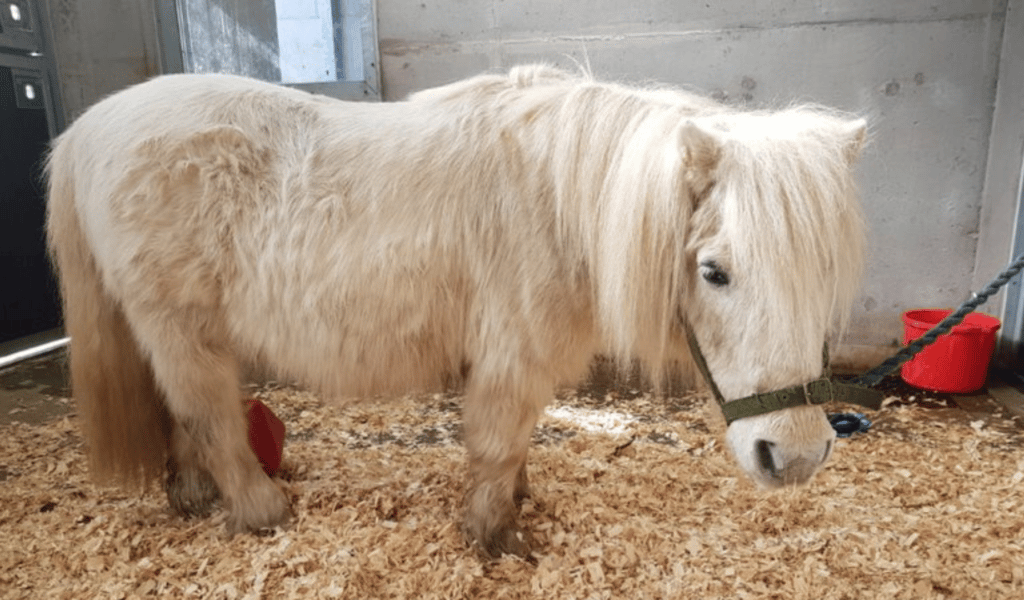Pituitary pars intermedia dysfunction (equine Cushing’s disease)
Pituitary pars intermedia dysfunction (PPID) is a hormone-related health condition. It is usually associated with a problem with the pituitary gland. The pituitary gland releases a number of hormones, but in the case of PPID it primarily involves adrenocorticotrophic hormone (ACTH).
Studies of the disease show that there is an enlargement of a part of the pituitary gland called the pars intermedia. This causes an increase in ACTH, which increases cortisol production, which in turn causes some of the signs the horse may have the disease.
PPID is seen in ponies more than horses. It usually affects equines over 20 years of age, but it may occur in equines as young as seven years old.
There are many clinical signs associated with PPID and an equine may present with one or a number of them in different combinations.

The most common clinical signs of PPID are:
- Thick coat which does not fully moult
- Curly coat (most noticeable when wet)
- Laminitis
- Lethargy
- Weight loss
- Excessive drinking and urination (polyuria)
- Excessive sweating (hyperhidrosis)
- Fat bulge above the eyes (Polyphagia)
- Reduced immune function
Testing for PPID
If your equine gets laminitis, it is always wise to have them tested for PPID regardless of the time of year. Although this is not normally done in the acute stages of laminitis, as it can affect the results, it can be done shortly after diagnosis, once starting to recover.
You should speak to a vet if any of the signs listed here occur. Bloods can be taken to test the amount of ACTH. This will allow the vet to determine if the horse has an imbalance. Once diagnosed, the horse will need to be retested at least yearly. The most accurate time to have this done is in the autumn. Vets will sometimes do an additional test in the spring. This will determine if the disease is under control or if a medication increase is necessary.
In positive cases, it can be treated with medication. They will need to take this for the rest of their lives. Without treatment, a horse with diagnosed PPID may be at risk of developing further symptoms.
The vet will decide on the most appropriate drug to be used in each case. It comes in the form of tablets or paste and is administered on a daily basis.
A horse with PPID should be kept on a fibre diet and avoid sugars, including rich grass. A feed balancer is recommended in order to provide the right amount of nutrients. It is important to not allow a horse to become overweight as this can lead to bouts of laminitis or other conditions such as EMS (Equine Metabolic Disorder).
Downloadable Information
Download a printable copy of this page to keep or share.
Downloadable VersionOur Work at The Mare and Foal Sanctuary
Advice and Resources
Lifelong Sanctuary
Rehoming



